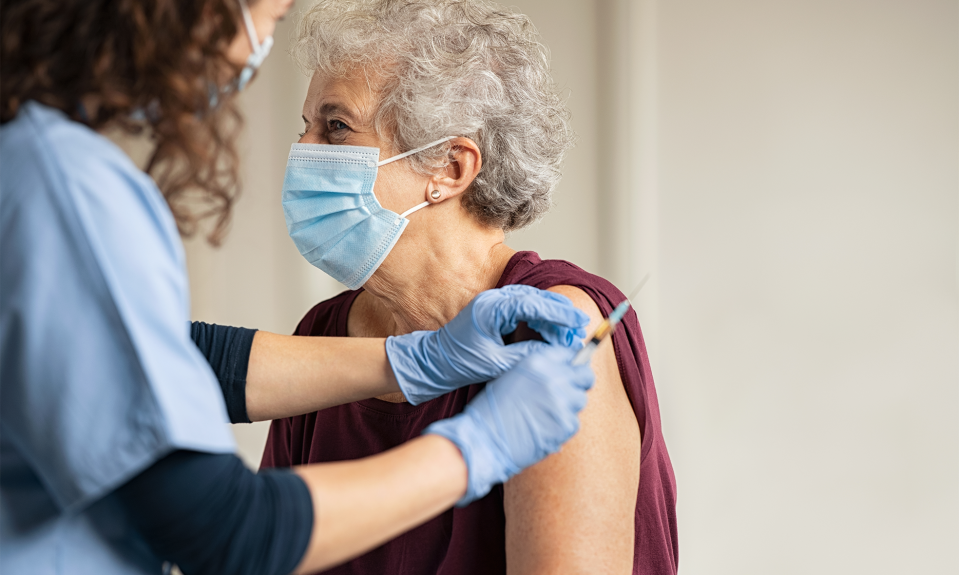For decades, the conventional wisdom surrounding grief has centered on Elisabeth Kübler-Ross’s theory that mourners typically navigate through five distinct stages of grief following a significant loss:
- Denial
- Anger
- Bargaining
- Depression
- Acceptance.
Now amidst the COVID-19 pandemic, we are finding that these stages don’t do enough to capture the experiences felt by millions as they contend with illness and loss in a global crisis. Gone are the days when grief could be packaged into five straightforward stages. Death is now a much greater part of our national conversation and an experience we are all sharing.
As a result, a number of scholars in clinical psychology are working on new, modern trajectories for grief that can help us understand how to comfort those in mourning and how to accept cultural grief that may stay with us for years to come.
The new grief trajectories
As I write this article, over 259,000 people in America have passed away from COVID-19. The circumstances surrounding the disease’s spread, and the isolation it demands, mean that some mourners are experiencing multiple grief trajectories at the same time.
Some hospice patients and their families must navigate terminal illness alone, as the risk of the disease’s spread forces us to socially distance. Our grief as mourners is compounded as we face our culture’s economic loss, the loss of routine and our loss of community. The rituals we once used to cope and give us closure, such as funerals or memorials, have unfortunately become opportunities to spread the virus. Every path once foretold is now unwritten.
Scholar George Bonanno is leading the way in clinical research regarding new grief trajectories and has coined four separate trajectories to map the post-COVID-19 landscape for mourners over time, rather than adhering to the idea of a single linear progression of grief for everyone. A significant finding from his recent studies is that some mourners will experience chronic grief and chronic depression.
What is chronic grief and depression?
According to Bonanno, a key factor of someone who experiences chronic grief or depression is that they see no purpose in life now or in the loss of the person they loved. However, some individuals may experience severe depression but then see improvement after many months. Bonanno describes this group as “function improved.” He attributes their long-term improvement to their outlook on life and their ability to see their greater purpose.
Bonanno characterizes those who are able to overcome their chronic grief or depression as resilient. He describes them as independent, purposeful and caring individuals who may have lost the love of their lives, but whose independence carries them. As hospice professionals, we can see these trajectories in the mourners we care for every day, and the studies surrounding each trajectory can help us improve our grief support to be more personalized.
Unchartered territory
Grief can feel magnified when familiar routines are gone and options to cope are scarce. The practices we used to use to comfort mourners are no longer considered safe, like going over to someone’s house or taking them out to dinner. As a result, our own emotional bandwidth to offer support to mourners is greatly reduced. Grief is one of the select experiences in life that connects our humanity, but the COVID-19 pandemic has challenged our ability to connect and mourn together.
One of the greatest lessons we’ve learned from the pandemic and Bonanno’s research is that the way we view the world matters when we lose someone. It may sound simple – the notion that our perspectives on life will dictate our path forward in grief – but it is a concept that few psychologists have ever emphasized in grief support. Instead, theories like Ross’s five stages of grief have viewed people as two dimensional actors, with grief happening to them instead of alongside them.
The pandemic has taught us that those who are underserved and dependent are at greater risk for chronic depression and chronic grief since the ability to be resilient is tied to one’s independence and stability following loss. The pandemic has also highlighted how the circumstances surrounding a loved one’s death can add to our own suffering. If we were unable to be with the person who passed away, our imagination is often worse than the reality. If we never got the chance to tell them goodbye or how we felt, those feelings of loss are compounded by the tragedy of their sudden passing.
New ways to honor loved ones
While the pandemic has impacted the ways we grieve, we have also seen a lot of new creative ways to memorialize and honor our loved ones and grieve their passing. Although we don’t currently have the opportunity to physically gather together in memory of those we’ve lost, technology has offered thoughtful alternatives that allow us to still support those who are grieving.
Webinar memorials allow families, friends and caregivers to connect, grieve and share memories of loved ones while adhering to social distancing guidelines. Webinar platforms have also been successfully used to host virtual support groups for people to navigate their grief together.
Online card writing services are a great way for people to send a sincere, custom message without ever having to leave home. Meal train websites also allow friends and family to send meals from local restaurants or coordinate a meal train among one another. Each of these are safe, efficient and contactless gestures that show support to those who are grieving.
While the pandemic is still relatively new, many of us have become more aware of the fragility of life and how the loss of connection impacts our ability to mourn. Although the pandemic has signficiantly impacted our lives, it has also allowed us to discover new perspectives on the way we grieve that will continue to evolve for many years to come.
Nichol Westendorf is Encompass Health director of hospice support services
The content of this site is for informational purposes only and should not be taken as professional medical advice. Always seek the advice of your physician or other qualified healthcare provider with any questions you may have regarding any medical conditions or treatments.


